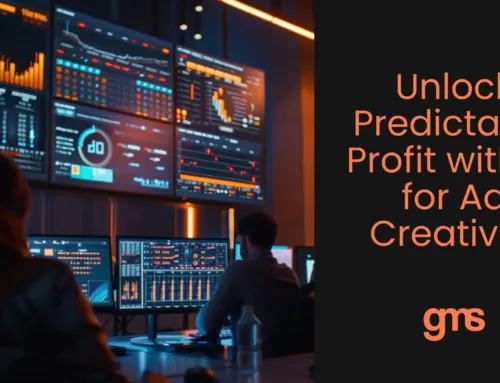Conversion Tracking Is the New Creative: Why Attribution Outranks Ad Copy in 2025
You’ve probably noticed patterns emerging in your analytics. Sometimes the flashiest ads underperform, while simple campaigns quietly break conversion records. That’s not random. It’s revealing. Conversion tracking is no longer a back-end technicality. It is the new frontline of creative. If you’ve been chasing ROI through ad copy alone, you’ve likely felt the frustration of watching budget burn without clarity.
Conversion tracking doesn’t just show what worked. It predicts what will. When attribution becomes your creative filter, your campaigns evolve from shots in the dark to calibrated, data-driven systems. And when you link every creative asset to a tracked result, you don’t just outspend your competitors. You outsmart them.
Conversion Tracking Is the Creative Power Move
Once, success hinged on big ideas and award-winning visuals. Now, it hinges on visibility. Conversion tracking reveals which creative executions drive behaviour and which drain spend. It’s not just about A/B testing headlines anymore. It’s about building a feedback loop that turns every touchpoint into a performance multiplier.
Performance Now Starts With Pixel Placement
The starting point for every high-performing campaign in 2025 is no longer a clever headline or a viral video. It begins with precise tracking infrastructure such as pixel placement, tag management, server-side attribution, and platform integrations. When every interaction is tracked accurately, performance becomes predictable. Creative becomes scalable only when every asset is aligned to a measurable conversion event. Brands that get this right don’t need to rely on luck or guesswork because they are building profit from the inside out.
Attribution Is the Story Creative Can’t Tell
Creative might win attention. Attribution wins the deal. Without it, your best-performing asset could be invisible, and your worst could be scaling by accident. Attribution stitches together the full narrative: which channels introduced the user, which messages nudged them forward, and what ultimately closed the sale.
Attribution Reveals the Real MVP
Attribution exposes the truth behind performance, regardless of creative polish or spend size. When you map the customer journey across channels and devices, you begin to see which touchpoints actually influence behaviour. The ad that receives the last click often gets the credit, but it’s frequently the nurturing email or first-touch search ad that made the difference. Attribution allows marketers to assign value accurately, optimise intelligently, and build campaigns that prioritise conversion outcomes over creative opinions. When every step is tracked, every decision becomes informed.
Digital Marketing Analytics Isn’t a Dashboard, It’s a Decision-Maker
Most brands still treat digital marketing analytics as reporting. But the smartest brands treat it as command and control. Real-time analytics don’t just help you measure outcomes. They help you engineer them. With the right stack, you can predict profitable creative combinations before campaigns even launch.
Data Isn’t Just for Review, It’s for Redirection
Analytics only drives growth when it becomes part of the decision-making loop. Too many businesses wait for monthly dashboards to guide strategy, but the real winners use live, real-time insights to pivot mid-flight. When dashboards shift from passive reporting to proactive optimisation, you unlock a new operational rhythm. Your team no longer waits to see what happened. They steer campaigns toward the results they want. Analytics is no longer a rear-view mirror. It is a GPS for profitable scale.
The ROI Shift: Why Visibility Now Equals Profitability
ROI used to be the endgame, measured in retrospectives and board meetings. Not anymore. Conversion tracking makes ROI an active ingredient, not an afterthought. When every campaign is tied to a measurable outcome, ROI becomes a dynamic lever. One you can pull daily, not just review quarterly.
Conversion Clarity Drives Compounding Results
When you track the full path from awareness to action, every conversion becomes an insight. Those insights fuel repeatable performance and compound future ROI. Clarity isn’t just about knowing what worked. It’s about knowing what to repeat, amplify, or eliminate. Brands that build attribution frameworks at the core of their operations no longer waste cycles guessing. They move faster, adapt quicker, and scale smarter. ROI stops being a lagging indicator and becomes a leading edge.
Book your FREE discovery consultation today.
Trust Requires More Than Talent, It Requires Tracking
Consumers are savvier than ever. They trust brands that show clarity, not chaos. And clients trust agencies that don’t just deliver impressions. They deliver insights. At GMS Media, we build attribution stacks that connect dots others miss. Our Amplify Method doesn’t just optimise performance. It explains it.
Tracking Is Trust You Can Measure
Trust is no longer earned through slogans or aesthetics. It is built through transparency, clarity, and consistency in outcomes. When a brand or agency can point to a data trail that clearly shows how a dollar spent turned into measurable revenue, it earns more than attention. It earns authority. Proper conversion tracking creates a foundation for trust between teams, stakeholders, and audiences because there is no ambiguity about what’s working. That’s how trust scales and how brands outperform.
What are the benefits of conversion tracking?
Conversion tracking gives marketers the power to measure exactly which channels, campaigns, and creative assets are driving real business outcomes. It closes the loop between ad spend and ROI by attributing conversions to specific actions taken by users, whether it’s a purchase, form submission, call, or other tracked event. This visibility enables smarter budgeting, better targeting, and more effective optimisation across the entire funnel.
With conversion tracking in place, businesses can stop relying on vanity metrics like impressions and clicks. Instead, they focus on performance metrics that map directly to revenue. The result is a more efficient use of ad spend, faster iteration cycles, and greater strategic clarity. Brands that prioritise tracking don’t just report on performance—they improve it.
Is Google conversion tracking free?
Yes, Google conversion tracking is free to use, but it requires proper setup within Google Ads and Google Tag Manager. The tracking itself comes at no additional cost beyond your advertising spend, making it a powerful tool for advertisers who want to measure performance without adding software overhead. For most businesses, this free capability can unlock critical insight into which keywords, ads, and landing pages are actually producing conversions.
However, while the tool is free, the real investment lies in how it’s implemented. Incomplete or incorrect conversion tracking setups can lead to misleading data and poor optimisation decisions. That’s why many growth-focused brands work with specialists to ensure their tracking stack is configured accurately. Because when your data is clean, your decisions become compound assets—not liabilities.
How to create conversion tracking?
To create conversion tracking, you first define what qualifies as a “conversion” for your business. This could include online purchases, lead form submissions, phone calls, downloads, or even scroll depth on key pages. Then, using tools like Google Ads, Google Analytics 4 (GA4), or third-party platforms like Hyros or Looker Studio, you set up the appropriate tags and triggers to track those actions across your website and paid channels.
Proper setup usually involves configuring Google Tag Manager or native platform tracking codes to fire upon specific user behaviours. Once the tags are live, the platforms begin collecting data that connects user activity to your defined conversion goals. The critical piece is ensuring each conversion tracking point is clean, specific, and mapped directly to measurable outcomes. That’s when tracking transforms from reporting to revenue strategy.
What is the purpose of conversion tracking in SEM?
In Search Engine Marketing (SEM), conversion tracking is essential for understanding which search queries, ads, and bidding strategies lead to actual customer actions. Without it, SEM becomes guesswork, campaigns might look like they’re performing based on click-through rates or quality scores, but there’s no way to know if they’re producing sales, leads, or profit. Conversion tracking provides the visibility needed to optimise toward outcomes, not just activity.
With conversion tracking, SEM campaigns can be refined continuously based on which keywords convert best, which landing pages outperform, and how different ad variations influence user behaviour. This allows marketers to allocate budget more efficiently, scale high-performing segments, and reduce wasted spend. The result is a more profitable SEM program grounded in proof, not theory.
Book your FREE discovery consultation today.
How does conversion tracking work?
Conversion tracking works by capturing and storing data on user actions after they interact with your digital assets, such as ads, websites, or landing pages. This is typically done using a combination of tracking pixels, event tags, cookies, and platform integrations. When a user clicks on an ad and completes a defined action, like making a purchase or submitting a form, the tracking system logs that event and attributes it to the original source.
These tracked interactions feed into analytics dashboards, helping marketers understand the full customer journey. Tools like GA4, Hyros, and CRM integrations then allow for multi-touch attribution, lifetime value tracking, and behavioural segmentation. In short, conversion tracking creates a feedback loop that makes marketing more intelligent, more accurate, and far more profitable.
Double Bind + Anchoring
You can either keep relying on instinct and hope your creative converts, or you can implement tracking systems that give you clarity, speed, and scale. Both paths involve effort. Only one provides certainty.
Book a Strategic Attribution Audit
With every event you track and every conversion you measure, your profit potential compounds. Once you have full-funnel visibility, your decision-making sharpens and your marketing becomes unstoppable.
About the Author
GMS Media Group is Australia’s premier performance marketing agency for mid-to-enterprise brands that demand control, clarity, and scale. With over $1 billion in tracked client revenue, we turn data into dominance. From attribution audits to enterprise-grade tracking stacks, we help brands lead categories through insight, not just activity. Ready to own your ROI?
Book your strategy session today.



